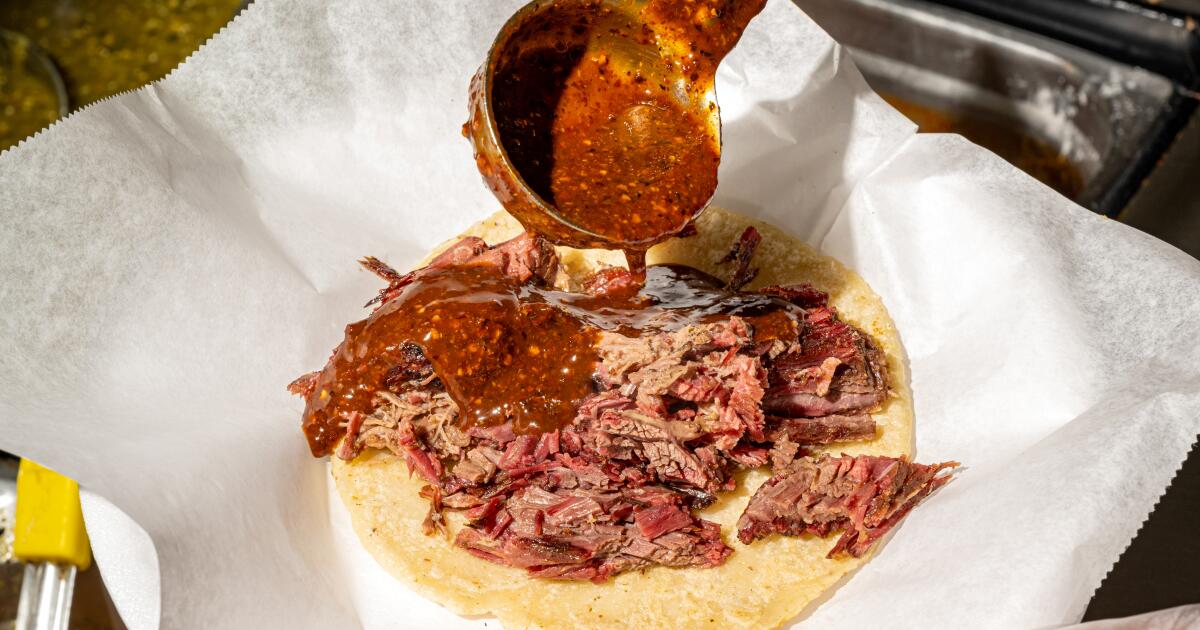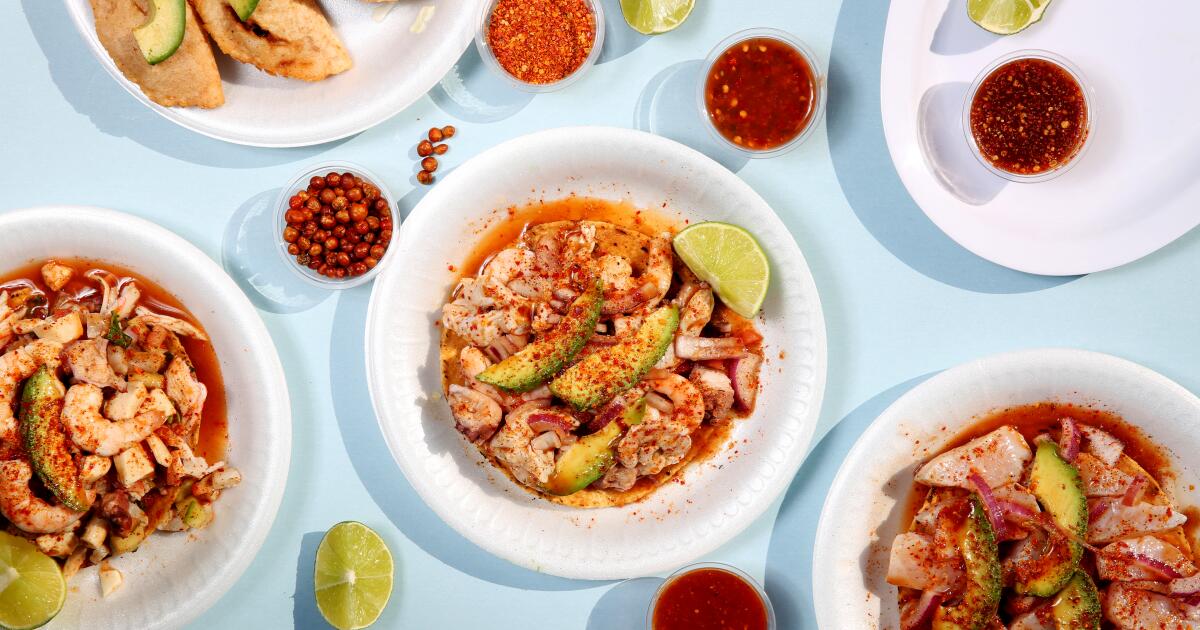A good plate of Sinaloa-style aguachile starts with liquid hot peppers, lots of lime, and freshly butterflied, raw shrimp. The flavor and heat build like a strong corrido: dramatic and full of contrast, tension and release. The chiles, the lime, the crunch of cucumber, the bite of red onion — it’s all deliberate. Bold, loud and alive. Just like Sinaloa.
In “Mexico: The Cookbook,” author Margarita Carrillo Arronte asserts that aguachile began in the sun-baked ranchlands of inland Sinaloa, not the coast. She says the original version was made with carne seca (sun-dried beef), rehydrated in water and jolted awake with chiltepín peppers. Picture ranchers grinding the chiles by hand, mixing them with lime and water, and pouring it over dehydrated meat to revive it like a delicious Frankenstein’s monster.
Francisco Leal, chef-owner of Mariscos Chiltepín in Vernon and Del Mar Ostioneria in Mid-City, shares a slightly different origin story. “According to legend, aguachile was invented in the hills of Los Mochis [Sinaloa],” he said. “The poor would mix tomatoes, onions and hot water with ground chiltepín. That’s why it’s called aguachile — chile water. They’d dip tortillas in it because that’s all they had. Naturally, when it reached the cities, people added protein.”
In both stories, aguachile migrated west to the coast — in particular, Mazatlán — where shrimp replaced carne seca. From there, it crossed borders and eventually took root in cities like Los Angeles, where it now thrives as both a beloved mariscos staple and a canvas for regional creativity.
Despite the comparisons, aguachile is not ceviche. The fish or shrimp in ceviche may marinate in citrus for hours. Traditional Sinaloa aguachile shrimp stay translucent, kissed but not cooked by the spicy lime juice.
The dish is popular across L.A.’s broader Mexican food scene, thanks to the city’s deeply rooted Sinaloan community. Many families hail from Mazatlán, Culiacán and Los Mochis and have been living in areas such as South Gate, Huntington Park, Paramount and East L.A. for decades. With them came a seafood-first sensibility that prioritizes freshness, balance and bold flavors in everyday cooking. That foundation helped aguachile thrive across generations and zip codes.
Chefs like Leal have expanded on the dish while staying true to its roots. At his Vernon restaurant, aguachile is more than a menu item — it’s a form of expression. Leal experiments with ingredients like passion fruit and tropical chiles but maintains an obsessive commitment to sourcing, texture and balance.
You’ll now find aguachile made with scallops at Gilberto Cetina’s Michelin-rated marisqueria Holbox or carrots at Enrique Olvera’s restaurant Damian in downtown L.A., but the rise of these variations is less about fleeting trends and more about the dish’s adaptability — its ability to hold complexity and evolve. Many chefs are drawing inspiration from seasonal California produce and veggie-forward palates, pairing traditional heat with a lighter, fresher profile.
But sometimes I crave the aguachile I grew up with.
My Sinaloan mom Elvia and my Sinaloan-American nephew Angel make the best aguachile I’ve ever had. They do it with high-quality shrimp that’s cleaned and butterflied just before serving, fresh-squeezed lime juice and chiles blended to order. Cold, sharp and so spicy it makes you sweat. Whether they make the dish as a quick snack with tortilla chips or an appetizer for a weekend asada, the goal is always to feed their family food from the heart.
As I explored L.A.’s aguachile scene, I was moved by how many places carried that same spirit. From front-yard mariscos stands to neighborhood institutions, here are 10 Sinaloan-style aguachiles to snack on all summer long.

